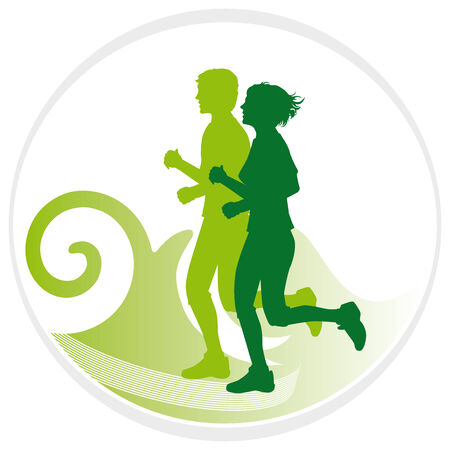Introduction: The Importance of Functional Mobility
Functional mobility is the cornerstone of independent living, affecting every aspect of daily life—from popping down to the local shops to hopping onto a bus or simply making a cuppa in your own kitchen. In the UK, where towns and cities are a patchwork of old cobbled streets, bustling high streets, and modern developments, the ability to move around safely and efficiently is essential not just for convenience but also for maintaining dignity, social connections, and overall well-being. For many people recovering from injury or illness, regaining functional mobility through gait rehabilitation can mean the difference between isolation and active participation in community life. This article explores why functional mobility matters so much for those striving for independence after rehabilitation, highlighting real-life impacts on everyday experiences in our uniquely British context.
2. Understanding Gait Rehabilitation
Gait rehabilitation sits at the heart of functional mobility improvement, particularly for patients recovering from neurological conditions, orthopaedic injuries, or long-term illnesses. In the UK, both the NHS and community-based settings employ a variety of techniques tailored to individual needs, aiming not just for clinical progress but tangible gains in everyday life. Below is an overview of key gait rehabilitation approaches, with practical insights based on real-life experience within British healthcare contexts.
Overview of Gait Rehabilitation Techniques
| Technique | Description | Common Settings | Relevance to UK Practice |
|---|---|---|---|
| Task-Specific Training | Repetition of walking tasks relevant to daily activities (e.g., navigating kerbs, stairs) | NHS outpatient clinics, community physiotherapy | Emphasises realistic scenarios like getting on/off buses or managing uneven pavements |
| Treadmill Training (with/without body-weight support) | Controlled environment for gait pattern correction and endurance building | NHS hospitals, specialist neuro-rehab centres | Useful during early stages post-stroke or spinal injury; often integrated with technology-assisted feedback |
| Strength and Balance Exercises | Focus on lower limb strength, core stability, and proprioception | Community halls, home-based rehab programmes | Empowers self-management; reduces falls risk in elderly populations common in UK demographics |
| Assistive Technology (e.g., FES, robotic aids) | Devices that stimulate muscle activity or provide mechanical assistance during walking | Larger NHS trusts, specialist clinics | Increasing uptake due to NHS innovation drives; helps bridge gap when hands-on therapy resources are stretched |
| Group-Based Mobility Classes | Peer-supported sessions focusing on social interaction and motivation alongside mobility goals | NHS day hospitals, local council-run initiatives | Culturally valued in the UK for combating isolation and promoting adherence among older adults |
Practical Insights from British Healthcare Settings
In practice, successful gait rehabilitation hinges on tailoring interventions to patient goals—be it regaining confidence crossing a busy high street or simply being able to make a cup of tea unaided. The NHS ethos prioritises evidence-based care delivered within finite resources; hence, therapists often blend one-to-one input with group sessions and home exercise plans. Community physiotherapists frequently collaborate with occupational therapists and local support groups to ensure continuity beyond hospital discharge—a hallmark of holistic British rehabilitation. Importantly, patient stories highlight that meaningful progress isn’t just measured by improved walking speed or symmetry but by restored independence in everyday life: catching the bus to see family, popping down to the corner shop, or enjoying a stroll in the park. These outcomes resonate strongly across both NHS targets and personal recovery journeys.

3. Measuring Patient Outcomes: Beyond the Clinic
When it comes to evaluating the success of gait rehabilitation in Britain, the conversation inevitably turns towards outcome measures. While clinical assessments provide a foundation, it’s essential to look at how these outcomes translate into real-world improvements in patients’ daily lives. In my own experience, I’ve seen how focusing too narrowly on lab-based metrics can miss the bigger picture — what really matters is whether patients regain the confidence and ability to move about their communities independently.
Common Outcome Measures Used in the UK
The British approach often incorporates tools like the Timed Up and Go (TUG) test, the 10 Metre Walk Test (10MWT), and the Rivermead Mobility Index. These are widely respected for their reliability and simplicity, enabling therapists to track changes over time. The TUG test, for example, assesses not only walking speed but also balance and the ability to transition from sitting to standing — all skills needed for everyday tasks like getting off a bus or moving around the kitchen. Similarly, patient-reported outcome measures such as the EQ-5D or the Oxford Hip Score are frequently used to capture personal perspectives on mobility, pain, and quality of life.
Reflecting Real-Life Impact
However, numbers alone rarely tell the full story. It’s one thing for someone to shave a few seconds off their TUG score; it’s quite another for them to confidently pop down to the local shops without fear of falling. That’s why many British clinicians now emphasise goal-setting conversations with patients, using outcome measures as starting points rather than endpoints. This person-centred approach acknowledges that each patient values different aspects of independence — some may long to walk unaided along Brighton seafront, while others simply wish to climb their own stairs safely.
Integrating Functional Goals into Everyday Life
Ultimately, functional mobility gains need to be meaningful in context. For patients in Britain, success might mean being able to take public transport again or join family walks across muddy fields. By combining standardised outcome measures with individualised goals and regular reviews, clinicians can ensure that rehabilitation efforts deliver tangible benefits beyond clinic walls — changes that genuinely improve everyday routines and restore a sense of normality and participation in community life.
4. Everyday Challenges and Adaptations
After completing gait rehabilitation, many patients find that the transition back to everyday life brings a fresh set of challenges. From personal experience, as well as insights gathered from others on this journey, its clear that functional mobility gains in the clinic need to be put to the test in real-world British settings—be it navigating public transport during rush hour, tackling uneven high streets, or managing daily tasks at home.
First-Hand Reflections on Common Obstacles
Patients often share that busy train stations, unpredictable weather, and narrow pavements can quickly become sources of anxiety. Stepping onto a crowded bus or crossing an old cobbled street in towns like York or Bath requires both confidence and careful planning. Within homes, steep staircases and compact bathrooms can feel daunting despite progress made during rehabilitation.
Practical Strategies for Everyday Navigation
Through trial and error, several practical strategies have emerged to help manage these challenges. Below is a table summarising some key adaptations used by patients across different environments:
| Environment | Common Obstacle | Adaptation Strategy |
|---|---|---|
| Public Transport | Stepping onto buses/trains; crowd navigation | Use priority seats; plan travel outside peak times; inform staff for assistance |
| Pavements & High Streets | Narrow paths; uneven surfaces; kerbs | Use a walking aid; map out step-free routes; wear suitable footwear for grip |
| Home Environment | Stairs; slippery bathrooms; reaching cupboards | Add grab rails; use non-slip mats; reorganise frequently used items within easy reach |
Coping with British Weather and Accessibility Issues
The unpredictable UK climate—rain one minute, sunshine the next—adds another layer of complexity. A foldable walking stick, waterproof clothing, and checking local council updates for accessible routes are all strategies that have proven useful. Meanwhile, learning how to advocate for oneself when accessibility falls short (such as reporting broken lifts at railway stations) is an important part of post-rehabilitation independence.
The path after gait rehabilitation is rarely straightforward, but sharing these first-hand experiences and practical tips helps others prepare for what lies ahead—and reminds us all that adaptation is part of the journey towards reclaiming everyday life.
5. Supporting Long-term Progress: Social and Community Resources
Gait rehabilitation is rarely a solitary journey—long-term progress hinges on the sustained support of social and community resources. In the UK, the role of carers, family members, local councils, and charity organisations cannot be overstated. While the initial burst of motivation from clinical sessions is invaluable, its the ongoing encouragement and assistance at home and in the community that truly embed functional mobility gains into everyday life.
The Vital Role of Carers and Family
Carers and family members act as pillars for individuals recovering their mobility. From helping with daily exercises to navigating public spaces or simply offering emotional encouragement during setbacks, their involvement ensures that rehabilitation does not end when the formal sessions stop. British families often coordinate with NHS physiotherapists or occupational therapists to reinforce strategies learned during rehab, fostering an environment where independence can flourish.
Local Councils: Bridging Services and Independence
Local councils across the UK are instrumental in providing practical support post-rehabilitation. This might include arranging transport services for those with limited mobility, ensuring accessible housing adaptations, or connecting individuals to community groups. Many patients find that council-funded day centres offer safe environments to practise walking skills while building confidence among peers facing similar challenges.
Charity Organisations: A Lifeline Beyond Healthcare
The contribution of charities like Scope, Age UK, or The Stroke Association is especially meaningful. These organisations provide resources ranging from peer support groups to equipment loans and tailored exercise classes. Their presence fills gaps left by statutory services, empowering individuals to sustain their gains and maintain an active role in their communities long after formal rehabilitation concludes.
Ultimately, it’s this web of social support—woven through personal relationships and community initiatives—that makes lasting improvements possible. In my experience working alongside British patients, I’ve seen how drawing on these resources transforms what could be an isolating struggle into a collective effort marked by resilience and hope.
6. Conclusion: Enhancing Quality of Life
Drawing from the experiences of British patients and clinicians, it is clear that successful gait rehabilitation extends far beyond the confines of the clinic. The core lesson learned is that functional mobility must be integrated into everyday life to truly enhance quality of life and foster long-term independence.
Continuous Support Makes a Difference
British physiotherapists often emphasise the importance of ongoing support networks—be it through NHS community resources, local walking groups, or tailored home exercise programmes. Patients report that regular check-ins, both in-person and virtually, provide motivation and reassurance as they navigate daily challenges.
The Value of Personalised Goals
Setting individualised, meaningful goals has proven vital for British patients. Whether it’s mastering public transport in London or confidently walking to the local shops in a rural village, these personal milestones help keep motivation high and progress measurable. Clinicians advocate for goal-setting sessions that include family members to ensure practical solutions are put in place at home and in the community.
Building Confidence Through Real-Life Practice
Many patients share that practising mobility skills in real-world environments—such as crossing busy streets or manoeuvring through crowded markets—builds not only physical capability but also confidence. British clinicians highlight the value of gradual exposure to these scenarios, allowing patients to overcome anxieties and adapt strategies on the spot.
Sustaining Independence Over Time
The collective experience demonstrates that maintaining functional mobility is an ongoing journey. Peer-led support groups, regular reviews with health professionals, and adaptive technologies all play a role in sustaining independence. Encouragingly, those who embrace a proactive approach—staying active within their means and seeking support when needed—report higher satisfaction and quality of life over time.
Ultimately, the journey through gait rehabilitation in the UK context shows that meaningful progress is best measured by each individual’s ability to participate fully in everyday life. By fostering collaboration between patients, families, and clinicians—and grounding interventions in real-world needs—we can continue to enhance functional mobility and empower individuals towards lasting independence.


